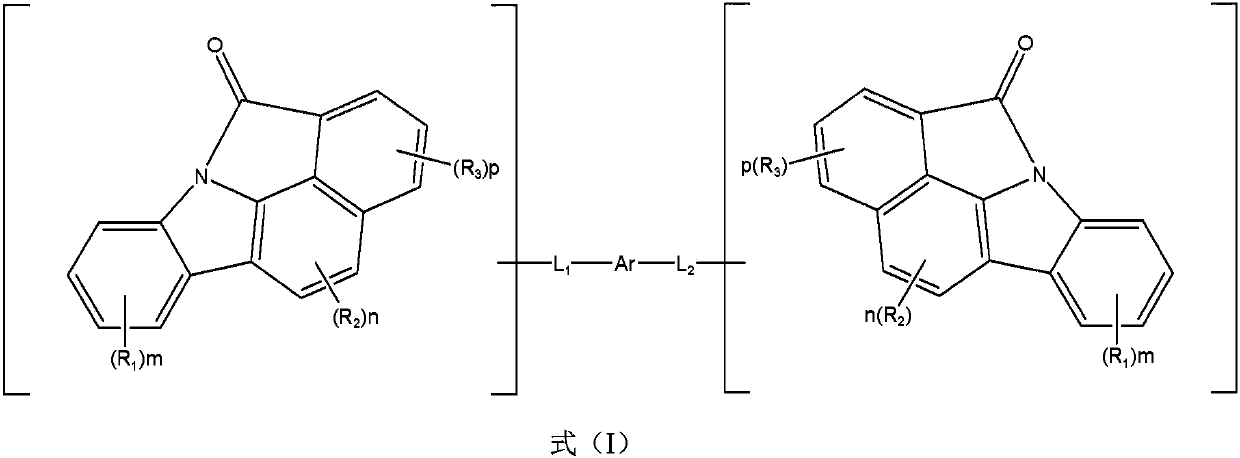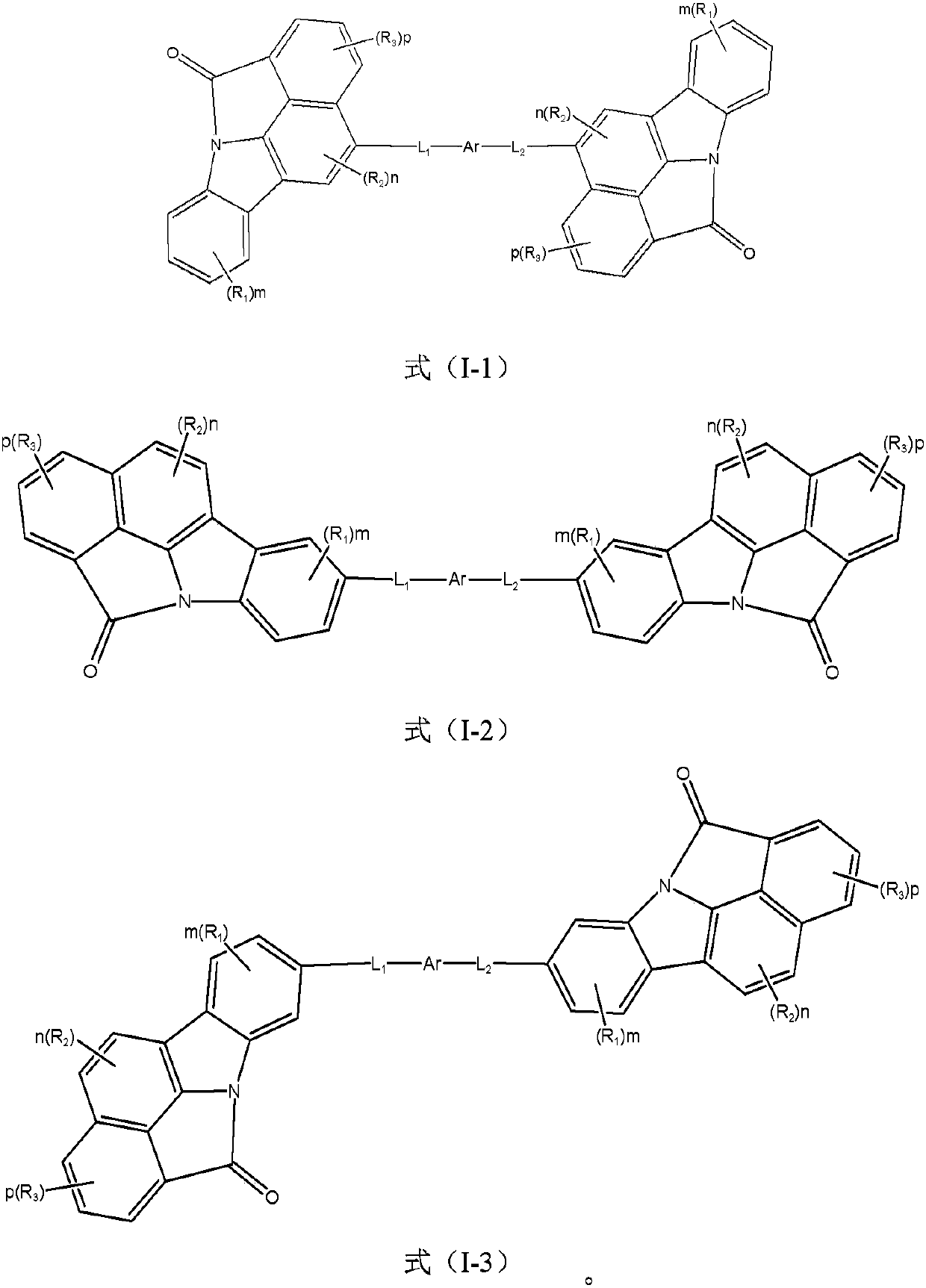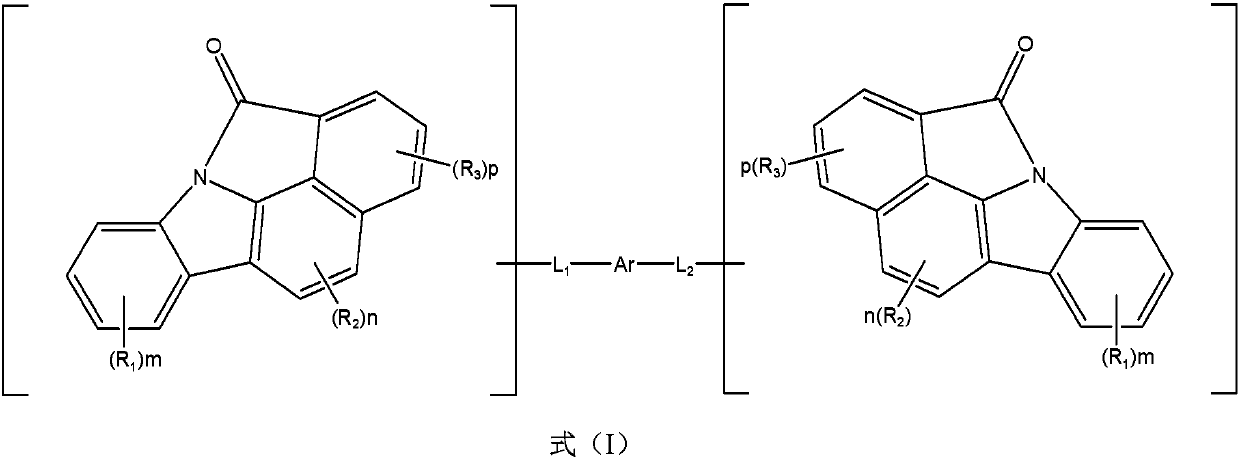Compound and organic electroluminescence device
A compound and electromechanical technology, applied in the field of organic electroluminescent display and lighting technology, and in the field of organic electroluminescent devices, can solve problems such as affecting power efficiency, reducing device luminous efficiency, and reducing recombination probability
- Summary
- Abstract
- Description
- Claims
- Application Information
AI Technical Summary
Problems solved by technology
Method used
Image
Examples
Synthetic example 2
[0048] Synthesis Example 2: Synthesis of Intermediate M2
[0049]
[0050] Intermediate M1 (31mmol, 10g), palladium acetate (1%, 0.07g), tricyclohexylphosphine tetrafluoroborate (3%, 0.34g) and DMF (200ml) were mixed, heated to 130°C for 3 hours , after the completion of the reaction, cool to room temperature, add 400 milliliters of pure water, extract with ethyl acetate, wash the organic phase with 300 ml of water, concentrate the organic phase under reduced pressure, mix silica gel and pass through a silica gel column (eluent: sherwood oil: ethyl acetate =2:1), the compound intermediate M2 (6.1 g, 80.1%) was obtained.
Synthetic example 3
[0051] Synthesis Example 3: Synthesis of Intermediate M3
[0052]
[0053] Under nitrogen protection, 1,8-naphtholactam (59.2mmol, 10g), 1-bromo-2-iodo-4 nitrobenzene (59.2mmol, 19.4g) was added in a 500ml three-necked flask, sodium tert-butoxide ( 118.4mmol, 11.2g), Pd 2 (dba) 3 (0.59mmol, 0.54g), 10% tri-tert-butylphosphine (2%, 15.5ml), dissolved in 200ml of toluene, reacted at 100°C for 3h, treated, washed with 200ml of water, the organic phase was passed through a silica gel column, and the eluent was decompressed Concentrate, wash the solid with 100ml ethanol, boil and wash with 100ml petroleum ether, and filter the product to obtain a total of 18.5g of intermediate M3, with a yield of 85% and a molecular weight of 368
Synthetic example 4
[0054] Synthesis Example 4: Synthesis of Intermediate M4
[0055]
[0056] Mix intermediate M3 (36.8g, 100mmol), palladium acetate (0.23g, 1.0mmol), tricyclohexylphosphine tetrafluoroborate (1.11g, 3.0mmol) and DMF (700ml) and heat to 130°C for reaction After 3 hours, after the reaction was over, cool to room temperature, add 700 ml of pure water, extract with ethyl acetate, wash the organic phase with 300 ml of water, concentrate under reduced pressure and mix with silica gel, pass through a silica gel column (eluent: petroleum ether: ethyl acetate = 2:1), to obtain compound intermediate M4 (23.73 g, 82.4%).
PUM
 Login to View More
Login to View More Abstract
Description
Claims
Application Information
 Login to View More
Login to View More - R&D
- Intellectual Property
- Life Sciences
- Materials
- Tech Scout
- Unparalleled Data Quality
- Higher Quality Content
- 60% Fewer Hallucinations
Browse by: Latest US Patents, China's latest patents, Technical Efficacy Thesaurus, Application Domain, Technology Topic, Popular Technical Reports.
© 2025 PatSnap. All rights reserved.Legal|Privacy policy|Modern Slavery Act Transparency Statement|Sitemap|About US| Contact US: help@patsnap.com



